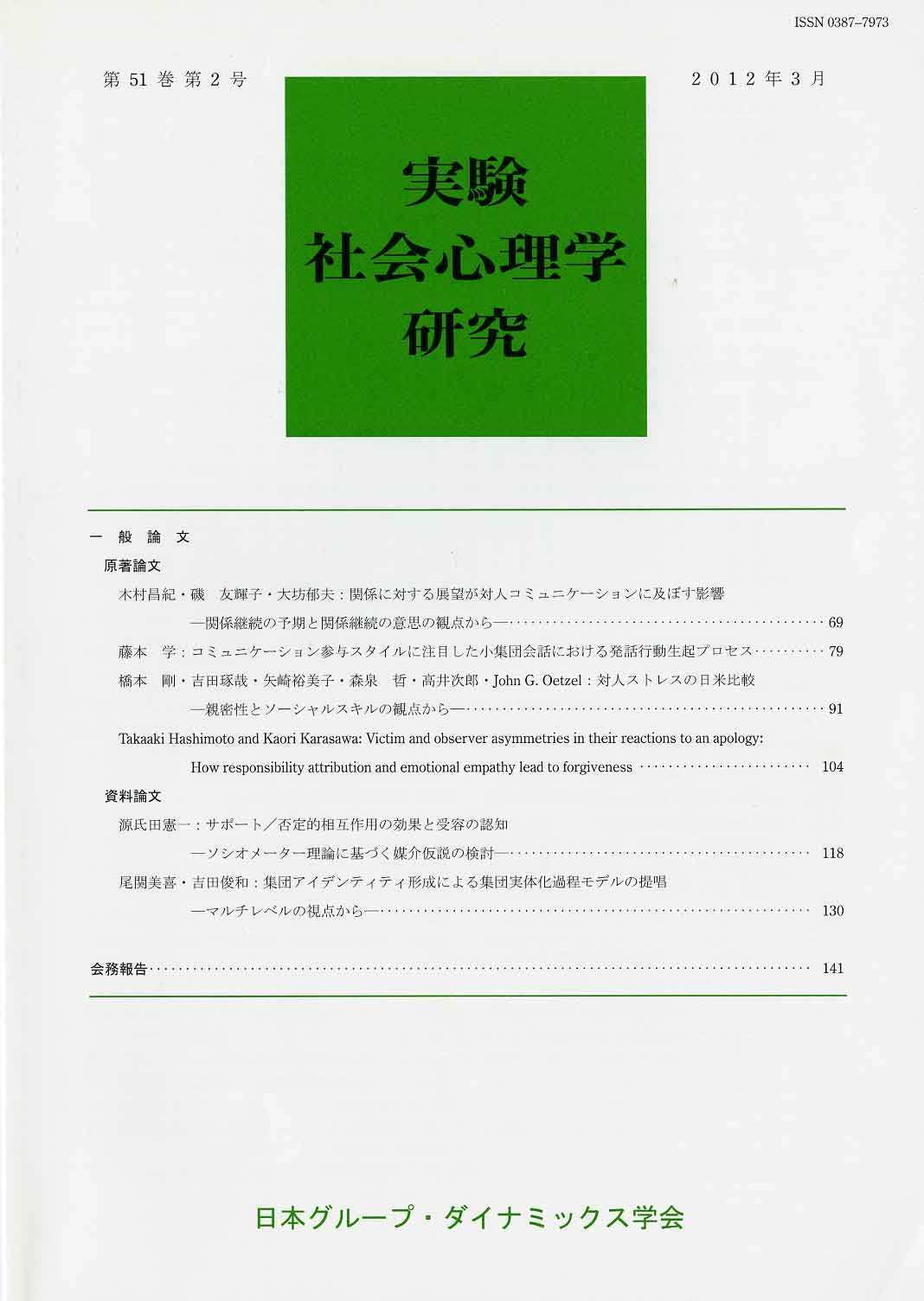Volume 49, Issue 2
Displaying 1-10 of 10 articles from this issue
- |<
- <
- 1
- >
- >|
Original Articles
-
2010 Volume 49 Issue 2 Pages 111-121
Published: 2010
Released on J-STAGE: February 20, 2010
Download PDF (415K) -
2010 Volume 49 Issue 2 Pages 122-131
Published: 2010
Released on J-STAGE: February 20, 2010
Download PDF (273K) -
2010 Volume 49 Issue 2 Pages 132-148
Published: 2010
Released on J-STAGE: February 20, 2010
Download PDF (612K) -
2010 Volume 49 Issue 2 Pages 149-159
Published: 2010
Released on J-STAGE: February 20, 2010
Download PDF (271K)
Short Article
-
2010 Volume 49 Issue 2 Pages 160-167
Published: 2010
Released on J-STAGE: February 20, 2010
Download PDF (231K)
SPECIAL ISSUE: Social psychological approach to regional environmental problem
-
2010 Volume 49 Issue 2 Pages 168-169
Published: 2010
Released on J-STAGE: February 20, 2010
Download PDF (125K)
Original Articles
-
2010 Volume 49 Issue 2 Pages 170-179
Published: 2010
Released on J-STAGE: February 20, 2010
Download PDF (377K) -
2010 Volume 49 Issue 2 Pages 180-193
Published: 2010
Released on J-STAGE: February 20, 2010
Download PDF (1124K) -
2010 Volume 49 Issue 2 Pages 194-204
Published: 2010
Released on J-STAGE: February 20, 2010
Download PDF (416K) -
2010 Volume 49 Issue 2 Pages 205-216
Published: 2010
Released on J-STAGE: February 20, 2010
Download PDF (288K)
- |<
- <
- 1
- >
- >|
